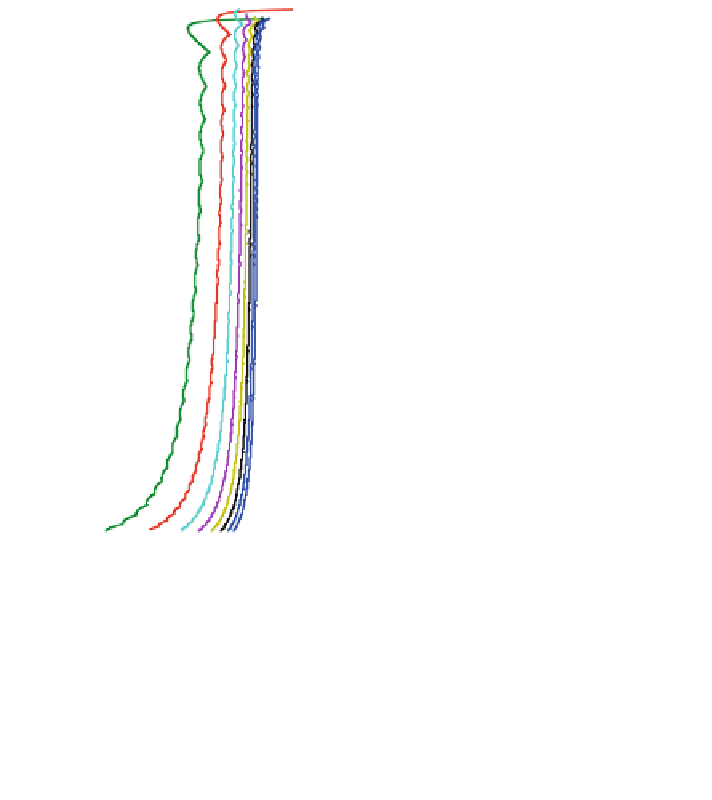Geoscience Reference
In-Depth Information
31
41
51
61
71
81
91
101
31
41
51
61
71
81
91
101
B
relative error to nye-vialov solution %
relative error to nye-vialov solution %
Fig. 6 Sensitivity of age depth relationship in an idealized Nye-Vialov ice sheet environment. Ice
ages where calculated at the ice divide where an analytical solution to the age-depth problem
exists. The figure compares two model runs with 31 and 101 sigma levels. Especially the Eulerian
tracer method is highly sensitive to the number of sigma levels. The large error of both methods at
the ice sheet surface, where the ice age should be zero is due to the very coarse resolution of the
surface layers. This leads to an erroneous representation of velocities and hence to large
discrepancies between the Eulerian solution and Nye-Vialov. Furthermore, Eulerian advection is a
diffusive scheme leading to a time spread in the upper layers
of the ice sheet close to the bedrock. This is due to the cumulative interpolation
error accumulated along the trajectory in case of the Lagrangian approach and due
to the increasing impact of numerical diffusion in the Eulerian solution. Low ver-
tical resolution results in considerable deviations of the Eulerian age-depth relation
from the analytical solution, whilst the Lagrangian advection is less affected.
Increasing the amount of sigma levels (
(finer vertical resolution), the performance of
both advection methods can be instantly improved, reducing the discrepancy close
to bedrock signi
cantly. This approach is applicable in an idealized resource-
friendly model-setup (such as the EISMINT environment, without shelves or
complicated geometries as opposed to full scale simulations of the Antarctic ice
sheet), however full scale simulations of large ice sheets limit the computationally
feasible degree of resolution to around 50
-
100 sigma levels.






































































































Search WWH ::

Custom Search